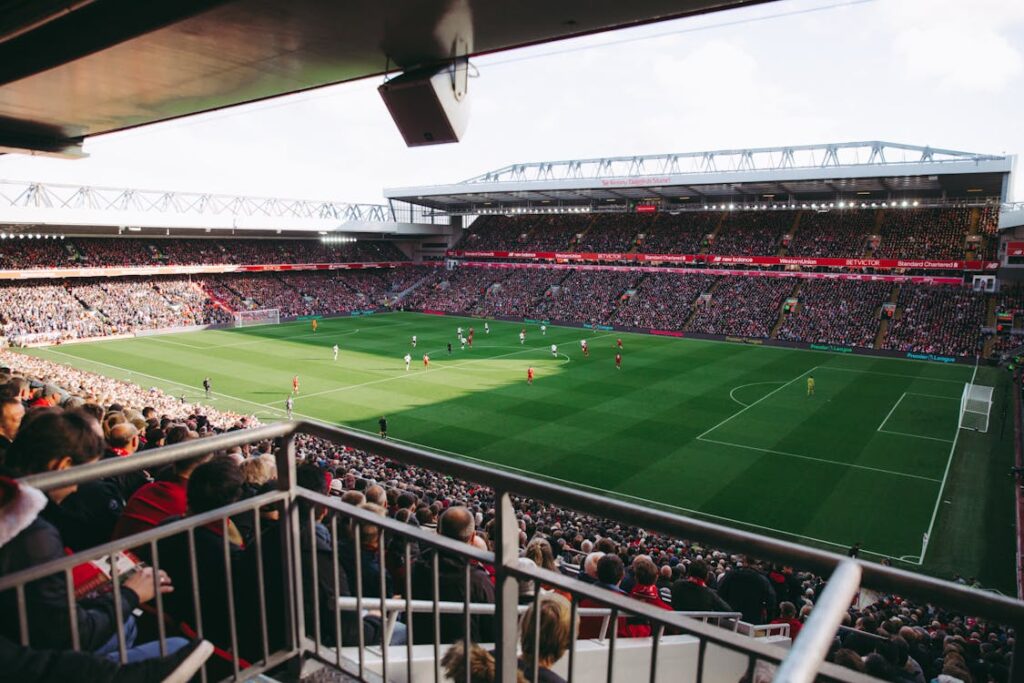The Vitality Stadium is home to AFC Bournemouth. It is a venue that holds a special place in the hearts of football fans in both locally and across the UK. It is known for its intimate atmosphere, dedicated fan base, and rich history. This stadium has been the site of some of the most thrilling moments in English football.
A Brief History of Vitality Stadium
This stadium is originally opened in 1910, the stadium has undergone numerous transformations over the years. Initially named Dean Court, the ground was built on land donated by the Cooper-Dean family, hence its original name. AFC Bournemouth has called this site its home for over a century, and the stadium has evolved significantly, reflecting the club’s journey from the lower divisions to the heights of the Premier League.
In the early 2000s, the stadium was rebuilt and reoriented, with the pitch rotated 90 degrees from its original position. This redevelopment, completed in 2001, reduced the overall capacity but significantly improved the facilities and overall structure, making it more modern and fan-friendly. Following a sponsorship agreement with the health and life insurance company Vitality in 2015, the stadium was renamed to Vitality Stadium, a name that it still proudly bears today.
Capacity and Structure: An Intimate Football Experience
With a seating capacity of just over 11,000, the Vitality Stadium is one of the smaller venues in the top tiers of English football. However, what it lacks in size, it more than makes up for in atmosphere and charm. The compact nature of the ground allows fans to be closer to the action, creating an environment that is both intense and engaging. This intimacy is something that larger stadiums often struggle to replicate, making the Vitality Stadium a unique place to watch football.
The stadium comprises four stands: the Main Stand, the Ted MacDougall Stand, the Steve Fletcher Stand, and the South Stand. Each stand offers a different perspective of the pitch and has its own history and significance. The Ted MacDougall Stand, named after one of the club’s greatest players, is a particularly special area for Bournemouth fans. Steve Fletcher, another club legend, also has a stand named in his honour, reflecting the deep connection between the club’s history and its current structure.
Community and Economic Impact
The Vitality Stadium is more than just a football ground; it is a community hub. Its presence significantly contributes to the local economy, with matchdays bringing in fans from across the country, filling local pubs, restaurants, and hotels. The stadium also serves as a venue for various community events and activities outside of football, further strengthening its role within the local community.
Over the years, the club has engaged in numerous outreach programmes, using the stadium as a base for educational and social initiatives aimed at promoting healthy lifestyles, supporting local charities, and providing opportunities for young people. These initiatives have helped cement AFC Bournemouth and the Vitality Stadium as key pillars of the Bournemouth community.
Memorable Matches and Historic Moments
The Vitality Stadium has been the site of many memorable moments in football history. One of the most notable games took place on May 2, 2015, when Bournemouth secured a 3-0 victory over Bolton Wanderers, confirming their promotion to the Premier League for the first time in the club’s history. This match marked the culmination of years of hard work and was celebrated as a landmark achievement, both for the club and its fans.
During their time in the Premier League, the Vitality Stadium saw Bournemouth host some of the biggest teams in English football, including Manchester United, Liverpool, and Arsenal. The stadium’s small capacity and tight configuration often put visiting teams under intense pressure, contributing to the club’s reputation as tough opponents at home.
Another unforgettable moment came in December 2018, when Bournemouth defeated Chelsea 4-0, one of their most significant victories in the Premier League. This win showcased the club’s ability to compete with the best in the country and added to the Vitality Stadium’s list of historic games.
Challenges and Future Plans
Despite its charm, the Vitality Stadium’s small size poses challenges for the club’s ambitions. The limited capacity restricts matchday revenue and makes it difficult to accommodate the growing number of fans who want to watch the team play. Over the years, there have been discussions about expanding the stadium or even moving to a new ground, but these plans have faced various hurdles, including financial constraints and planning permissions.
In 2017, the club announced plans to build a new, larger stadium near Kings Park, not far from the current site. This proposal aimed to increase capacity and improve facilities for fans. However, these plans have been delayed, and the project remains in a state of uncertainty. While the desire to grow and improve is evident, the club is also keen to retain the unique atmosphere and connection to the local community that the Vitality Stadium offers.
The Importance of the Vitality Stadium to AFC Bournemouth
The Vitality Stadium is an integral part of AFC Bournemouth’s identity. It has been the backdrop for the club’s most significant achievements and continues to serve as a symbol of the club’s growth and resilience. The familiarity of the stands, the proximity to the pitch, and the memories made over the years make it a cherished venue.
Stadium with a Bright Future
The Vitality Stadium may be small compared to other Premier League and Championship grounds, but it has a big heart. Its intimate atmosphere, passionate fan base, and role within the local community make it a special place in English football. As AFC Bournemouth continues to grow and achieve new milestones, the stadium will remain a crucial part of the club’s journey.
